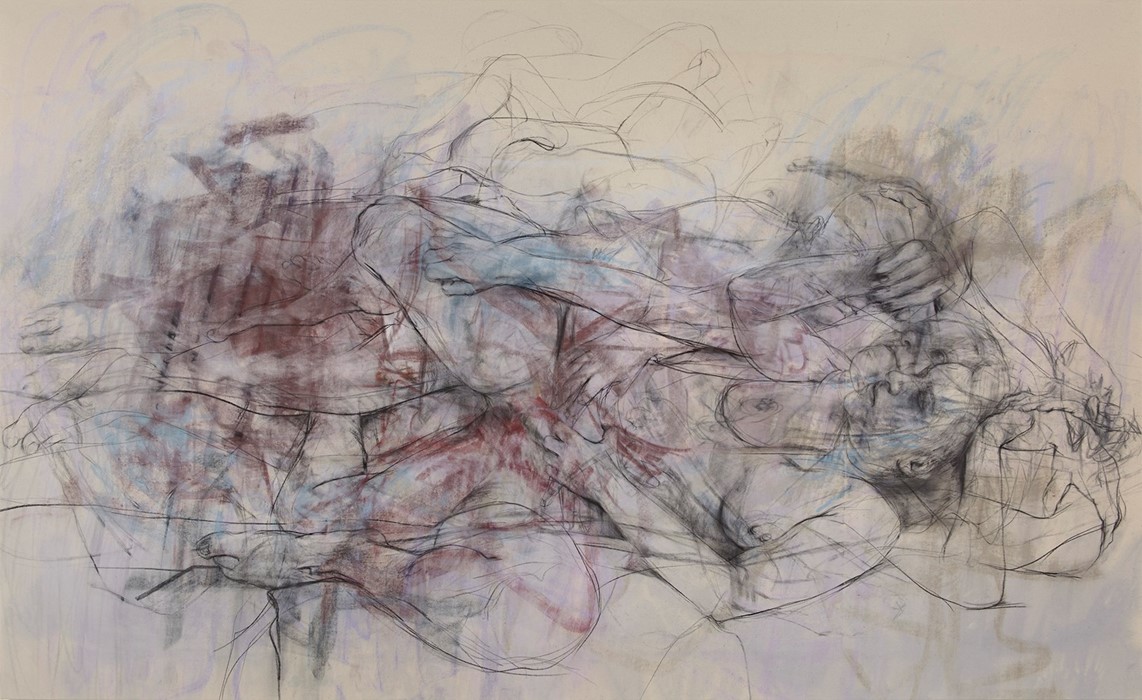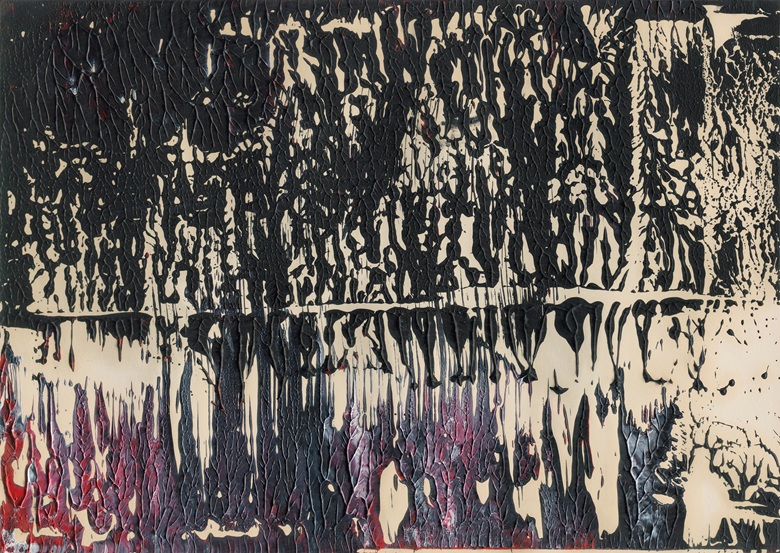Of Charles XII of Sweden, who was until 19 April this year the last head of state killed in battle, Voltaire said that he was half-Alexander the Great, half-Don Quixote. While in the trenches of Fredriksten, Norway, a bullet went through his head with the plopping sound of ‘a stone forcefully thrown into the mud’ (according to a witness). Death was instantaneous. Almost equally instantaneous were rumours that enemy fire might not be to blame, especially since the king’s death was followed by a coup d’état and a thorough reform of Sweden’s system of government. Kanem, a desert environment with temperatures averaging 40 degrees, is no Norway, but the demise there of Chad’s president Idriss Déby – reportedly from a bullet wound in the chest – bears a few resemblances to Charles’s Norwegian end. There are the rumours, the bullet wound, and the coup d’état – which is plainly what the rushed succession of Déby’s son Mahamat Idriss Déby is. But the deepest parallel is that, ultimately, Déby was a victim of his belief in the mythology of the warrior king, and in the indispensability of that mythology in what remains the fraying edge of France’s ghost empire in Africa. Déby would never have inspired Voltaire’s quip, but he quixotically saw himself as a Napoleonic Braveheart, a mix of French general and tribal captain. Last August, he anointed himself maréchal du Tchad, symbolically placing himself in the tradition of the maréchaux de France and holding, with a beaming smile, a baton modèle empire (the empire in question is Napoleon’s). But his army is tribal and colonial, not national.
Déby’s career began as part of Chad’s efforts to build a national army, but the country has long had a special bond with that of France. The lands France subjugated at the greatest cost during colonial conquest are typically those where its military’s influence remains strongest, and none took a higher toll than Chad. Commandant Lamy, leader of the French invasion, was killed in battle at Kusseri, in April 1900. Victory there only opened the way for further battles against the highly militarised northern tribal chiefs and sultans, who had easy access to firearms supplied by their putative sovereigns, the Ottoman Turks. It took France two decades to finally assume control, littering the land with ‘here…a Colonel, there a Captain or Lieutenant or an Adjutant, a Sergeant-Major, a Sergeant or a humble Corporal, buried under the sands of the Sahara’, to quote a litany from the British missionary Dugald Campbell. The military imprint was also onomastic. The French-built capital was named Fort-Lamy; Sahr, the country’s third largest city, used to be Fort-Archambault; and the oasis town of Faya was rebaptised Largeau, from the name of the conqueror of Borkou and Tibesti. Just a few years after it was considered ‘pacified’, Chad became the military base of the Free French. The Leclerc division which flew the tricolour on Hitler’s Berghof in May 1945, had left from here with 3000 African troops and 55 French officers. As a result of this feat, Leclerc was the leading figure in the final cohort of the maréchaux de France.
Chad became independent in 1960, though the French army did not relinquish control of its northern provinces until four years later. By then, Déby, born into the warlike desert tribe of the Zaghawa, where men must at all times carry a dagger, was entering his teens. The French military played a key role in the reckless administration of the area by southern Chadians. For many centuries, people in what became southern Chad were preyed upon by northern slavers who established their states on wealth from trade with the Middle East. But for French colonialism, the humid south was the ‘useful Chad’, where school education was expanded and from which administrative aides were recruited. In this vision, the north was a realm of restless nomads and fanatical Islam (in fact, the faith only became hegemonic there in the 20th century) where civilian rule and Western education had no place.
Inevitably, at independence power of administration devolved to the south. Chad’s first president, François Tombalbaye, was inextricably a southern nationalist, colonial collaborationist, and Chadian patriot. In these conditions, civilian rule in the north proved a perverse form of homegrown colonialism. A year after the French lifted their boot, the north revolted. A report which Tombalbaye commissioned from French experts, after a French intervention confronted the insurgency, exposed the extent of the ineptitude and insensitivity of southern administrators. Among other egregious details, the report revealed that women were disrobed and paraded in public and men fined for not cutting their beards, in juvenile attempts at imposing southern cultural norms. Tombalbaye mended fences, released political prisoners, and appointed a government half-composed of Muslims. Faced with France’s failure to quell the rebellion, he radically changed his foreign policy, broke diplomatic ties with Israel and brokered an entente with Sudan and Libya that cut the northern rebels off from their foreign bases and supplies. The rebels shrank from a threat to a nuisance.
Tombalbaye also became convinced that the solution to Chad’s problems lay in cultural renovation and threw himself into the building of ‘Tchaditude’ (‘Chadness’), a sense of national identity that embraced ‘African authenticity’ and rejected Christianity and Islam. That’s when Fort-Lamy became N’Djamena, and Fort-Archambault, Sahr. Tchaditude especially appalled Christians, until then a solid base of Tombalbaye’s regime, and it had no discernible impact on the country’s disintegrating economy. Tombalbaye was killed by a band of gendarmes in April 1975. Within a week, one of the perpetrators gloated on Radio Tchad that the slain president had paid ‘mercenaries’ to watch them, when in fact the mercenaries were working for them. The transparent allusion was to Camille Gourvenec and Pierre Galopin, former French military officers who headed Tombalbaye’s secret police, known as ‘N’Djamena’s Gestapo’. Gouvernec and Galopin had multiple loyalties, including to the French state.
Déby had begun training at the national military academy the year of the coup against Tombalbaye. The following year, he was sent to a castle in French Flanders to receive instruction as a military pilot. One day at the school’s cafeteria, a Chadian trainee had a fit of madness and attacked, dagger out, two of his Tunisian schoolmates. There was some bloodletting, but disaster was averted after Déby lunged at the attacker and subdued him. The attacker was expelled from France, and the peace-maker had to turn in his own dagger. But he had been noticed. Back in Chad, the post-Tombalbaye era had descended into a civil war between ‘Sudists’, under President Felix Malloum, and ‘Nordists’ under rebel chiefs Goukouni Weddeye and Hissein Habré. This wrecked the already tattered Chadian state, which was branded ‘un État néant’ by Jeune Afrique, the Francophone weekly of record on African affairs. (The phrase evidently stung, because Déby recalled it in his last interview with Jeune Afrique, forty years later, in November 2019). It also shifted the balance of power to the north. When Déby returned to Chad in 1979, he was co-opted by Habré who put him at the helm of the northern armies. But if the Francophile Déby’s position reflected French influence, Habré saw himself as the man of the Americans.
Taking advantage of the mayhem, Colonel Gaddafi had invaded a northern stretch of Chadian territory, the ‘Aozou Strip,’ over which he claimed Libyan sovereignty. The Reagan administration resolved to ‘bloody the nose of mad dog Gaddafi’ (in the words of Secretary of State Alexander Haig) and put up their first covert operation – before Jonas Savimbi in Angola and the Contras in Nicaragua – to bring Habré to power. Ultimately, it was French military support that secured the victory against Gaddafi. But for his own grasp on power, Habré relied on a ‘Gestapo’ trained by the Americans which proved far more lethal than Tombalbaye’s. Déby was at first a mainstay in that apparatus of control and repression, but its tribal structure made it inherently untrustworthy from the vantage of the man at the top. Loyalty to the putative nation-state, of the kind which Tombalbaye had sought to foster with Tchaditude, had failed to supersede allegiance to a tribe or a clan within a tribe (Habré himself is a Tubu Daza). As a result, a paranoid Habré lashed out all around him in what looked like genocidal mania, and stoked the very rebellions he dreaded would materialise. Moreover, he imprudently posed as an Americanophile in spite of having invited back the French military. Solidly implanted via the anti-Libyan Operation Manta that morphed into Operation Épervier in 1986, the French army was there to stay. Indeed, Operation Épervier was never terminated, simply segueing into the current ‘anti-terror’ Operation Barkhane. Meanwhile, Déby, who Habré once sought to defang by consigning him to a diplomatic sinecure in Paris, joined a movement of armed dissidents that trekked to Darfur, in western Sudan, and attacked the Habré regime from bases there. Shorn of French support and with the fickle Americans gone, Habré decamped to Senegal and Déby took power in December 1990.
To fully get rid of Habré, Déby mounted a commission that was given free rein to investigate the atrocities perpetrated under him. The official report, which established that upwards of 40,000 people had died in Chad’s gaols between 1982 and 1990, started a long-haul process against Habré – the Senegalese state strenuously resisted getting involved – which finally succeeded in the 2010s. But if the investigation-cum-report stoked hopes that Déby would be a different kind of ruler, disillusionment was swift. Deaths in prison, unrestrained police brutality, torture, ‘compulsory disappearances’ (the phrase is used by human-rights advocates) and other features of the Habré tyranny were soon restored. Compulsory disappearances are the result of inadvertent deaths occasioned by torture, when the damaged body becomes an embarrassment for the regime. This was apparently the fate of Ibni Oumar Mahamat Saleh, not seen since his arrest in 2008. The charismatic leader of the Party for Liberties and Development was respected across the country, and Déby held a bitter grudge against him after they fell out in the late 1990s.
With Déby, the French had struck gold in Chad, or at least something that looked like it. Déby did not have the dreams of Tombalbaye, which ended up making the man impossible to ‘handle’, and unlike Weddeye and Habré he knew how to live with French control. If the democratisation of the 1990s was an opportunity to resume the task of building a sense of national belonging, this time through participatory rather than authoritarian methods, Déby was not one to seize it. His vision of Chad, shaped by his political experience, was cynically tribalist; democratic formalities merely looked like a way to fake legitimacy and get the necessary winks from the ‘international community’. This approach led him into the same impasse as Habré, and brought about similar rebellions. But the French always stuck by him and saved his skin more than once.
What did France gain in tirelessly propping up a dictator against the aspirations of his people? Such interests are at first sight hard to perceive. They are certainly not economic. Even when Chad became an oil producer in 2003, the players were US companies Exxon Mobil and Chevron, paired with Malaysia’s Petronas. The main explanation is instead that Chad is a prized chasse gardée of the military lobby within the French state, and that this accords with the Élysée’s belief that the French empire somehow survives in Africa in the form of ‘strategic interests’ and ‘responsibilities.’ It is this combination that led, for example, to French support of Hutu supremacists in the Rwandan genocide of 1993-94, even though France had no tangible interests in Rwanda. The only comparable situation is that of Russia in the lands formerly included in the USSR. Like many a Francophone strongman, Déby understood and fully exploited the equation.
But Chad is unlike any other Francophone post-colony, in that military and rebel violence have become the principal mode of political action. For most Chad specialists, this culture of violence must be traced back to the slave economy and to colonial militarism, but it was certainly at an unusually high point in the years when Déby entered the political fray. Déby mastered that culture, or so he thought. His thirty-year reign gave him the stability needed for the building of a Chadian army, if one of a very peculiar cast. Recruitment is national, but leadership is tribal, and is steeped in the mythology of the warrior figure rather than the professional soldier. The result is a brutally efficient fighting force, especially when deployed in fields of action where such an ethos is absent. In this way, Chad’s military became something of a glorified mercenary legion at the service of the French in their ‘anti-terror’ crusade in the Sahel, but also of central African despots and warlords.
In March-April 2020, Déby enjoyed the glory bestowed on his leadership of a punitive expedition against Boko Haram, in the Lake Chad region. There he won his marshal baton, and perhaps gained a thirst for more such action. The rebel column that descended from Libya, ducking French drone surveillance by skirting into Nigerien territory and emerging in Kanem, looked like an opportunity for that. He may not have known Dugald Campbell’s litany, and did not think a dead marshal might be added to it.
The men who killed Déby in a barren field 400 km from his capital are members of the Front for Alternation and Concord in Chad (FACT), which reportedly has benefited from the largesse of Libya’s strongman Khalifa Haftar. They claim to be Chadian patriots. In propaganda dispersed on social media, they affirm that the trigger for their attack was Déby’s decision to remain in power for life, nullifying Chad’s democracy. They explained that the true target must be France, and the final objective, freedom. They referenced similar situations in other Francophone countries, and called for an anticolonial rising.
As if in response, Emmanuel Macron, who flew in to salute a ‘true friend of France’, vowed ‘not to let anybody put into question or threaten today or tomorrow Chad’s stability and integrity’. In a country that has been the definition of instability for its entire history, the word ‘Chad’ is a tag for the Déby regime. In 2017, at Déby’s request, France had frozen the assets of Mahamat Mahdi Ali, the leader of FACT, branding the man – a French-trained jurist, economist and long-time member of France’s Socialist Party – a terrorist. It must now help the nascent regime of Déby Junior get its bearings, which implies supporting a manhunt into adjacent far east Niger, where the ‘terrorist’ has retreated. As events unfold, one should keep in mind this is Tubu territory, and Mahdi Ali and most of his followers are Tubu. And there is the intriguing fact that last year, a similar Tubu-led politico-military group, the Union of the Patriotic Forces for the Rebuilding of the Republic, emerged in this part of Niger with an equivalent message of revolt against the perpetuation of single party rule in that country by means of fishy elections. But with the repressive apparatus in their hand and the firm backing of the French, there is little chance that such militarised but distant appeals to democracy will frighten rulers in the two countries into opening the political arena. Déby’s end will be seen simply as a lesson about what not to do.
Read on: Augusta Conchiglia, ‘Ghosts of Kamerun’, NLR 77.









